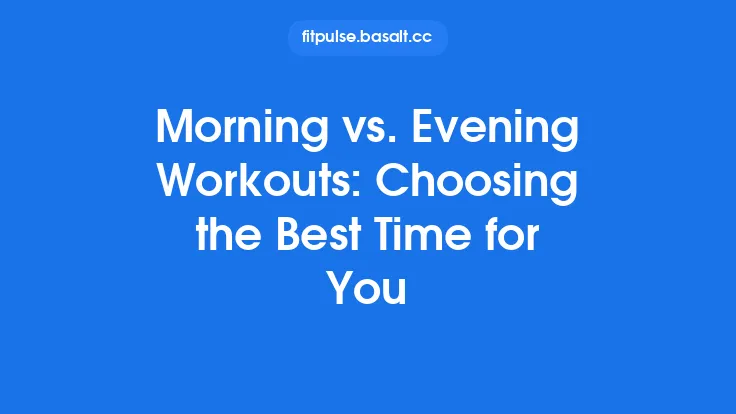Evening is a natural transition point between the demands of the day and the restorative period of sleep. When the body is still moving, even gently, it signals to the nervous system that the day’s stressors are being processed rather than ignored. A well‑structured stretching sequence performed after dinner can lower cortisol levels, improve circulation, and prepare both mind and muscles for a deeper, more uninterrupted night’s rest. Unlike high‑intensity workouts that spike adrenaline, these low‑impact movements keep heart rate modest while still delivering physiological benefits that counteract the cumulative tension built up over hours of sitting, typing, or commuting. Below is a comprehensive guide to creating, executing, and refining stress‑reducing stretching sequences that fit seamlessly into an evening home‑workout routine.
Why Evening Stretching Helps Reduce Stress
- Parasympathetic Activation
Gentle, sustained stretches stimulate mechanoreceptors in the skin and connective tissue, which in turn send afferent signals to the brainstem. This cascade promotes parasympathetic dominance, the “rest‑and‑digest” branch of the autonomic nervous system, leading to a measurable drop in heart rate variability (HRV) and cortisol.
- Fascial Release and Muscle Lengthening
Throughout the day, fascia—the connective tissue that surrounds muscles—can become adherent and less pliable. Targeted stretching applies a low‑load, prolonged tension that encourages fluid movement within the fascial layers, reducing stiffness and the sensation of tightness that often translates into mental tension.
- Improved Joint Mobility and Postural Reset
Prolonged sitting typically results in anterior pelvic tilt, rounded shoulders, and shortened hip flexors. Evening stretches that address these patterns restore joint range of motion, allowing the body to settle into a more neutral alignment that is conducive to comfortable sleep.
- Neurochemical Shifts
Stretching triggers the release of endorphins and serotonin, neurotransmitters associated with mood elevation and relaxation. While the effect is modest compared to vigorous cardio, the cumulative impact over weeks can contribute to a more resilient stress response.
Principles of Effective Stress‑Reducing Stretching
| Principle | Practical Application |
|---|---|
| Duration | Hold each stretch for 45–90 seconds. Longer holds allow the viscoelastic properties of muscle and fascia to adapt, promoting a deeper release. |
| Intensity | Aim for a mild to moderate stretch sensation (≈3–4 on a 0–10 discomfort scale). Over‑stretching can activate the sympathetic system, counteracting relaxation. |
| Progression | Gradually increase hold time or add a gentle micro‑movement (e.g., small pulses) once the stretch feels easy. |
| Breath Awareness | While we avoid formal breathing techniques, simply allowing the breath to flow naturally without forcing it supports the parasympathetic shift. |
| Mindful Focus | Direct attention to the area being stretched, noticing temperature, texture, and subtle changes. This mental anchoring reduces rumination without requiring meditation. |
| Consistency | Perform the sequence 4–6 times per week, ideally within 1–2 hours of your final meal, to establish a reliable cue for the body’s wind‑down phase. |
Designing Your Evening Stretch Routine
- Space Preparation
Choose a quiet corner with enough room to lie flat and extend your limbs. A yoga mat or a firm carpet provides a stable surface. Dim lighting or a single soft lamp can signal to the brain that it’s time to unwind.
- Equipment (Optional)
- Strap or towel for assisted hamstring and shoulder stretches.
- Foam roller for pre‑stretch myofascial release (use sparingly to avoid overstimulation).
- Cushion or bolster for supporting the lower back in supine positions.
- Sequence Structure
- Warm‑up (2–3 min): Light joint circles (neck, shoulders, hips) to increase synovial fluid flow.
- Main Stretch Set (15–20 min): Three to four targeted sequences covering the upper body, spine, hips, and lower limbs.
- Cool‑down (2 min): Gentle diaphragmatic breathing while lying supine, allowing the body to integrate the stretch benefits.
- Timing
Total session length should not exceed 25 minutes. This duration is sufficient to reap stress‑reduction benefits without encroaching on bedtime.
Sequence 1: Gentle Full‑Body Release
| Position | Instructions | Target Muscles |
|---|---|---|
| Supine Reach‑Through | Lie on your back, arms extended overhead, legs straight. Inhale, feel the spine lengthen; exhale, gently press the lower back into the mat, allowing the shoulders to relax. Hold for 60 seconds. | Erector spinae, latissimus dorsi, anterior shoulder capsule |
| Knees‑to‑Chest with Gentle Rock | Pull both knees toward the chest, clasp hands around shins. Rock side‑to‑side in a slow, controlled manner for 30 seconds, then hold the neutral position for another 30 seconds. | Gluteus maximus, piriformis, lumbar spine |
| Supine Figure‑Four | Cross right ankle over left knee, forming a “4”. Thread the right hand through the opening, clasp the left thigh, and gently pull toward the chest. Hold 45 seconds each side. | Hip external rotators, gluteus medius, piriformis |
Key tip: Maintain a soft gaze or close the eyes to reduce visual stimulation, which helps the nervous system settle.
Sequence 2: Targeted Neck, Shoulders, and Upper Back
| Position | Instructions | Target Muscles |
|---|---|---|
| Seated Neck Release | Sit tall, shoulders relaxed. Gently tilt the right ear toward the right shoulder, using the right hand to apply a light pressure on the left side of the head. Hold 45 seconds, then switch sides. | Upper trapezius, levator scapulae, sternocleidomastoid |
| Thread‑the‑Needle | Begin on hands‑and‑knees. Slide the right arm under the left torso, palm up, lowering the right shoulder toward the mat. Extend the left arm forward for a counter‑stretch. Hold 60 seconds each side. | Thoracic rotators, rhomboids, posterior deltoid |
| Wall Chest Opener | Stand a foot away from a wall, place forearm on the wall with elbow at shoulder height, gently turn the body away from the arm. Hold 60 seconds each side. | Pectoralis major/minor, anterior deltoid, serratus anterior |
Note: Avoid excessive cervical flexion; the goal is a gentle lengthening, not a deep stretch that could trigger tension headaches.
Sequence 3: Lower Back and Hip Opener
| Position | Instructions | Target Muscles |
|---|---|---|
| Cat‑Cow with Emphasis on Extension | From hands‑and‑knees, inhale to arch the back (cow), exhale to round (cat). Perform 8–10 cycles, then hold the extended position (cow) for 30 seconds, focusing on opening the lumbar spine. | Multifidus, erector spinae, abdominal wall |
| Supine Hamstring Stretch with Strap | Loop a strap around the ball of the right foot, keep the left leg grounded. Gently pull the right leg toward you, maintaining a neutral pelvis. Hold 60 seconds each side. | Hamstrings, gastrocnemius, sacrotuberous ligament |
| Butterfly Stretch | Sit with soles of feet together, knees dropping outward. Gently press knees toward the floor using elbows if needed. Hold 90 seconds. | Adductors, groin, inner thigh fascia |
Adjustment: If the lower back feels uncomfortable during hamstring work, place a small pillow under the hips to reduce lumbar strain.
Sequence 4: Calming Leg and Foot Stretch
| Position | Instructions | Target Muscles |
|---|---|---|
| Standing Calf Stretch | Face a wall, place hands on it, step right foot back, heel down, toes forward. Lean forward until a stretch is felt in the calf. Hold 60 seconds each side. | Gastrocnemius, soleus |
| Ankle Circles | While seated, lift one foot off the ground and draw slow circles with the ankle, 10 rotations each direction. Switch feet. | Ankle joint capsule, peroneal muscles |
| Toe‑Spread and Flex | Sit with feet flat, spread toes wide, hold 10 seconds, then curl toes tightly, hold 10 seconds. Repeat 5 cycles. | Intrinsic foot muscles, plantar fascia |
Why it matters: The feet contain a high density of proprioceptive receptors. Gentle stimulation can send calming signals up the kinetic chain, reinforcing the overall relaxation response.
Integrating Mindful Awareness Without Formal Meditation
Even though this article does not delve into structured meditation, a simple “body‑scan” mindset can be woven into each stretch:
- Anchor Point: Choose a focal sensation—such as the feeling of the mat against your back or the stretch lengthening in a specific muscle.
- Labeling: Silently note the quality of the sensation (“tight,” “warm,” “tingling”) without judgment.
- Release: As you exhale, imagine the labeled tension softening, even if the breath is not consciously controlled.
This practice takes only a few seconds per stretch but amplifies the stress‑reduction effect by preventing the mind from drifting into problem‑solving mode.
Tips for Consistency and Progression
- Set a Fixed Cue: Pair the stretch routine with a non‑exercise habit, such as brushing teeth or reading a chapter of a book. The cue‑routine‑reward loop solidifies adherence.
- Log Your Sessions: A simple notebook entry noting date, duration, and any notable changes (e.g., “knee felt less tight”) helps track progress and maintain motivation.
- Gradual Load Increase: After two weeks of comfort, add a light resistance band to the hamstring stretch or increase hold times by 15 seconds.
- Seasonal Adjustments: In colder months, a brief warm‑up (e.g., 2 minutes of marching in place) can prevent muscle stiffness that interferes with deep stretching.
Safety Considerations and Modifications
| Issue | Modification |
|---|---|
| Lower Back Discomfort | Place a folded blanket under the sacrum during supine stretches; keep knees bent in the “knees‑to‑chest” pose. |
| Neck Pain | Perform neck stretches only within a comfortable range; avoid pulling the head with the hand. |
| Limited Hip Mobility | Use a yoga block or stack of books under the thigh in the butterfly stretch to reduce the angle. |
| Joint Hypermobility | Focus on gentle activation rather than deep lengthening; hold stretches for shorter periods (30 seconds). |
| Acute Injury | Skip the affected region and consult a healthcare professional before resuming. |
Always listen to the body’s feedback. A mild stretch sensation is expected; sharp pain is a signal to stop.
Making Evening Stretching a Sustainable Habit
The ultimate goal is to embed these sequences into the nightly rhythm so that they become an automatic cue for the body to transition from “alert” to “relaxed.” Start with a single 10‑minute session on three evenings per week, then expand both duration and frequency as the routine feels natural. Over time, you’ll likely notice not only reduced muscular tension but also improvements in sleep latency, mood stability, and overall resilience to daily stressors.
By adhering to the principles outlined above—prioritizing gentle intensity, mindful focus, and consistent practice—you can harness the physiological power of stretching to create a calm, restorative evening environment without the need for elaborate equipment or extensive time commitments. Your body and mind will thank you each night as you drift more peacefully into sleep, ready to face tomorrow with renewed vigor.





